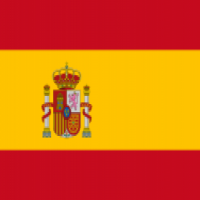Summary:
A Spanish university has developed an innovative system for controlling the presence of workers in their workplaces based on the use of mobile devices. Thanks to this system, it is not necessary for workers to make time-stamps as this is done automatically. This reduces time loss and avoids possible marking errors. It also reduces the infrastructure needed to carry out the clocking in. Companies or public administration entities are sought for license or technical cooperation agreements.
Description:
Control time is a common control procedure in companies that have a relatively large volume of workers. To manage this marking there are different systems that allow the worker to record the time of entry and exit to their workplace. These systems require the performance of some voluntary action by the worker. This can cause errors in the markings, forgetfulness, omissions and unnecessary losses of time in workers' activities.
So far, no solution has been developed that allows this process to be carried out in an unassisted and transparent way for users, making the marking automatically when joining the workplace.
A Spanish research group proposes a solution that consists of the use of technological means to carry out the time stamp in an unassisted and transparent way for the workers. For this, the users' own devices with wireless connection capabilities are used to identify and register the workers.
The system designed is capable of connecting to mobile devices and identifying each user when they enter or leave their workplace. The system sends information to a centralized unit that collects the information of all the workers and processes them, keeping the complete attendance control of the company.
The technology consists of a distributed system composed of the following elements (Figure 1):
• Worker's Device. These are the devices carried by the workers, mainly smartphones, which allow the identification of the user at the time of entry and exit of their work station.
• Set of sensor elements. They are sensors that are placed in the control areas through which workers pass and their devices are detected.
• Transceiver. Elements that collect the data from the set of sensor elements and sends them to a remote server in the cloud for analysis and processing.
• Cloud server. The server is in charge of collecting the identification and presence sent by the transceiver and executes the presence control applications. The business layers, the persistence layer, and the administration and control layer are located on this server, as well as all associated services.
The control zone is where the presence of the worker is monitored. This are will be established by wireless communication technology, typically Wi-Fi communication.
The deployment of this technology can be carried out in two possible scenarios (Figure 2):
1. Control zones created at the accesses to the workplace. In this way, the entrances and exits of the workers can be known.
2. To monitore the activity of the workers, locating the position of each worker and therefore recording their dedication to each of the tasks.
This technology is interesting for any type of company. It will be of special interest to those who present a greater complexity, such as having a large number of workers, who perform different tasks, require their movement between different processes or jobs, or that the work activity is planned through parts and complex work shifts.
The research group is looking for patent licensing agreements. The company should be responsible for the development of the commercial prototype, the validation of the technology in real scenarios, and its introduction into the market. The university will be ready to provide technical assistance in each step, if required, specilly to adapt the technology to the scenario needed by the company.
However, the research group would be also interested in establishing technical cooperation agreements to further develop the system, to find new applications or to adapt it to the company’s needs. The goal of this type of collaboration would be increasing the technology readiness level for a future commercial exploitation of the patent. The university would offer its support based on their know-how; while, the partner sought would provide its expertise to help improve this invention. The university would offer this partner a preferential option to acquire this technology in exclusivity.
Type (e.g. company, R&D institution…), field of industry and Role of Partner Sought:
- Type of partner sought: industries, public administration entities.
- Specific area of activity of the partner: industrial or service companies, public administration centers, hospitals, transport companies, etc.
- Task to be performed:
* In the license agreement: to buy a license for the technology, to produce a commercial prototype and make its validation in real scenarios, and to introduce it into the market.
* In the technical cooperation agreement: to provide their expertise in order to collaborate with the scientists on further development and/or improvements of the technology; to provide the scenario that best suits their operation so that the research group can adapt the technology to their needs. The company should identify technical requirements and/or market and client’s needs in order to carry out further technical development so that the market readiness will be increased and the technology could be commercially exploited.
Stage of Development:
Prototype available for demonstration
Comments Regarding Stage of Development:
The research group has developed a functional prototype of the system. The system can use different data collection technologies and can be adapted to different contexts and types of business activities depending on the needs of the company.
IPR Status:
Patent(s) applied for but not yet granted
Comments Regarding IPR Status:
Spanish patent application.
External code:
TOES20201117001








